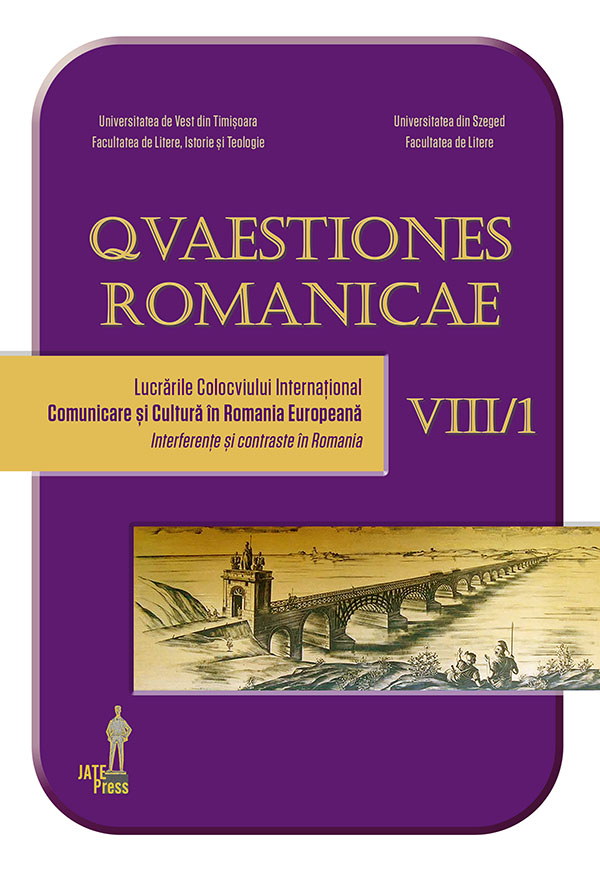Studiu comparativ al piesei pentru pian Ondine
Abstract: (A Comparative Study of the Piano Piece Ondine) The subject of this article is the parallels and contrasts between two works, based on the same source of inspiration, Ondine. The authors of which are two contemporary composers Maurice Ravel and Claude Debussy, who have distinct compositional styles, and their own unique approaches to the piece. We will also look at the role the inspiration had in shaping their respective work as well.The Russian music also had a powerful influence on both composers’ life, music that was frequently performed on the Parisian scenes. The two composers were strongly influenced in their use of modality, unique harmonies, and ostinato technique by the music of Mussorgsky, Rimsky-Korsakov and Borodin. Ravel, due to the fact that he included the text of the poem by Aloysius Bertrand in the publishing of the suite Gaspard de la Nuit, acknowledges Bertrand as a source of inspiration. Ravel’s piece was printed in 1908. On the other hand, the source of inspiration for Debussy’s Ondine is less proven. Ondine is the eight Prelude out of twelve, from the second book of the piano Preludes composed between 1910-1913. Ravel’s Ondine is a work of great virtuosity compared to Debussy’s composition, which doesn’t require such a versatile technique. Because of the narrative character, structurally speaking the form is obscure, but one can still distinguish two musical ideas. There are two main themes at its base and both are mo-dal themes introduced in the left hand moving at small intervals. As opposed to Ravel’s Ondine, Debussy’s work reveals a totally different perception. The length of the piece is much more reduced, and although the piece is structured in several sections based on motivic themes and gestures, it offers a unitary perspective. As in Ravel’s case, the form is not a definite one. If in Ravel’s Ondine the dominant element is a homophonic texture of an accompanied tune, in Debussy’s case we can distinguish a counterpoint layer technique of exposition and juxtaposition of the sono-rous material: the pedal-tone which appears several times during the piece together with the ostinato rhythm.
Keywords: Comparative musical analysis, Impressionism, character, legend, literature.
Rezumat: O paralelă a două lucrări care au la bază aceeaşi sursă inspiraţională, Ondine, scrisă de doi compozitori contemporani – Maurice Ravel şi Claude Debussy –, dar diferiţi ca tehnică de compoziţie face studiul acestui articol. În viaţa celor doi o puternică influenţă a avut-o şi muzica rusească, prezentă cu regularitate pe scenele pariziene. Cei doi compozitori au fost marcaţi de inflexiunea armoniilor, modurilor, tehnicii ostinato din muzica lui Mussorgsky, Rimsky-Korsakov şi Borodin. Prin faptul că a inserat textul poemului lui Aloysius Bertrand în publicarea suitei Gaspard de la Nuit, Ravel îl confirmă pe acesta ca sursă inspiraţională. Piesa lui Ravel a ieşit la lumina tiparului în 1908. În schimb, sursa de inspiraţie în ceea ce priveşte Ondine a lui Debussy, este mai puţin dovedită. Ondine este al 8-lea preludiu din cele 12 din caietul II al Preludiilor pentru pian, compuse între 1910-1913. Ondine a lui Ravel este o piesă de mare virtuozitate, în comparaţie cu piesa lui Debussy, care din punct de vedere tehnic, nu este atât de complexă. Datorită caracterului narativ, structural vorbind, forma este obscură, neclară dar putem distinge totuşi două idei muzicale. La bază avem două teme principale, ambele teme sunt modale, introduse la mâna stângă ce se mişcă în intervale mici. În contrast cu Ondine a lui Ravel, cea a lui Debussy prezintă o viziune total diferită. Dimensiunile sunt mult mai reduse, dar cu toate că piesa este structurată în mai multe secţiuni bazate pe teme şi gesturi motivice, ea oferă o perspectivă unitară. Ca şi la Ravel, forma nu este o formă definită; dacă la Ondine a lui Ravel predomină o textură omofonă de melodie acompaniată, la Debussy se observă o tehnică în „straturi” contrapunctică de expunere şi juxtapunere a materialului sonor: tonul-pedală care apare de mai multe ori de-a lungul piesei împreună cu ritmul ostinato.
Cuvinte-cheie: analiză muzicală comparată, impresionism, personaj, legendă, literatură.
